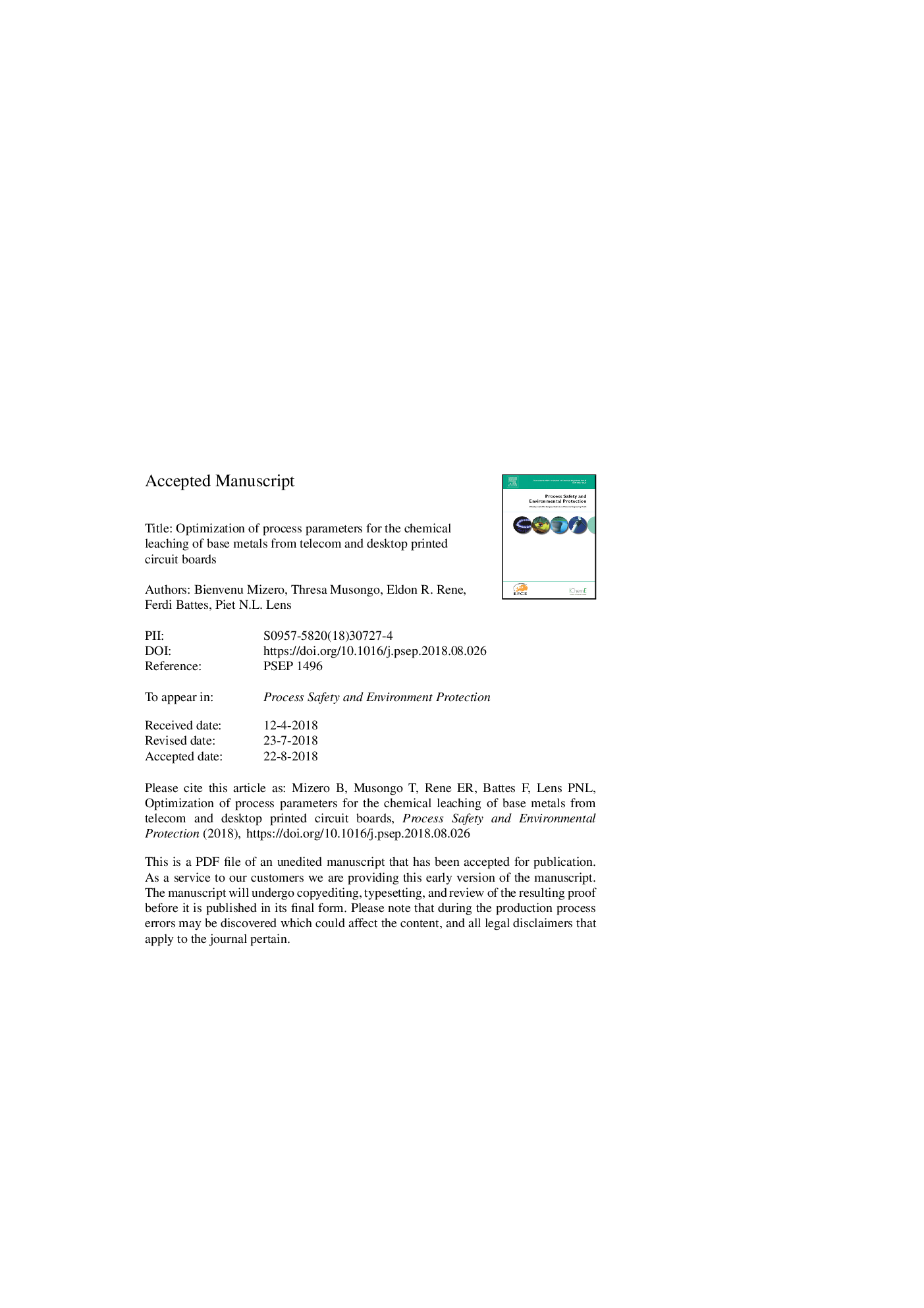| Article ID | Journal | Published Year | Pages | File Type |
|---|---|---|---|---|
| 8960247 | Process Safety and Environmental Protection | 2018 | 39 Pages |
Abstract
End-of-life electrical and electronic equipment are secondary sources of metals that can complement natural ores. Printed circuit boards (PCB) are an important resource from which base metals such as Cu, Ni, and Zn can be leached and recovered. Three types of PCB were studied: two boards from telecom equipment (T1 and T2) and one from a desktop with the aim to optimize the process parameter and determine the Cu, Ni and Zn content from T1, T2 and desktop PCB. Chemical leaching using sulphuric acid (H2SO4) and hydrogen peroxide (H2O2) was studied in batch reactors, upflow columns and stirred tank reactors (STR). The parameters optimized were pulp density (PD), H2SO4 and H2O2 concentration, stirring speed (RPM), and particle size for a contact time of 18âh. The optimum conditions for Cu, Ni and Zn leaching were: 4.3âM H2SO4, 4.8âM H2O2, 194 RPM, 0.1 (%, w/v) PD and 0.5âmm particle size. In batch conditions, a Cu leaching efficiency of 80% was achieved for PCB from T1, T2, and desktop. Furthermore, a maximum Cu recovery efficiency of 25.6 and 77.6% was obtained from T1 PCB in, respectively, the upflow column and STR in 5âh for the particle size fraction 0.5-1.6âmm. T1 exhibited a higher metal content than T2 and desktop PCB. The smaller particle size, the high concentration of lixiviant and low PD increased the chemical leaching efficiency of Cu from PCB.
Related Topics
Physical Sciences and Engineering
Chemical Engineering
Chemical Health and Safety
Authors
Bienvenu Mizero, Thresa Musongo, Eldon R. Rene, Ferdi Battes, Piet N.L. Lens,
